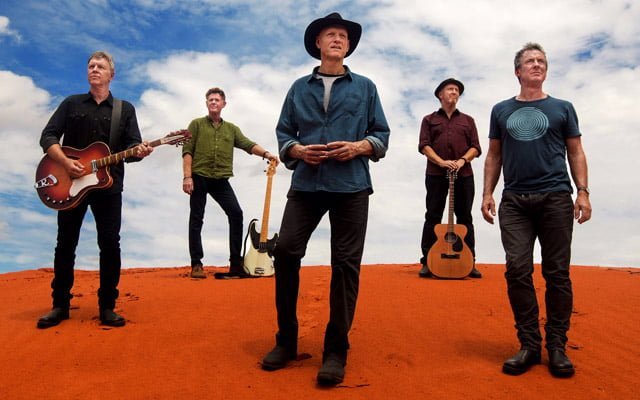Experienced session guitarist Jake Gakovik takes us through the basic elements of song craft: form, lyrics, melody, harmony and rhythm
Songwriting is a craft that requires persistence and passion. While it may not be easy, it is simple! When organising your best ideas to create a song, your main elements are form, lyrics, melody, harmony, and rhythm. Let’s take a look at each one…
FORM
Most contemporary songs go something like this:
A – Verse 1
B – Chorus
A – Verse 2
B – Chorus
C – Bridge
B – Chorus
Sections of songs are often identified using letters, so we could call the verse A, we could call the chorus B, and the bridge we could call C. Other commonly used song forms are A-A-B-A, A-B-A-B, or even A-B-C-A-B-C-D-B (In this case, section B is commonly called the “pre-chorus”).
Your verse 1 lyrics will be different than verse 2 with perhaps some melodic embellishments, but your chorus lyrics and melody stay the same throughout. If your song is a fishing pole, think of the chorus as the hook. It is the one section that is repeated multiple times, the one that contains the main idea of the song, the one that your listener will hopefully hook on to and sing along! The bridge comes right on time, the listener wants something new and fresh after hearing essentially the same thing twice (A-B-A-B).
The bridge can offer a new perspective, a different dynamic, a new musical idea. Sometimes a bridge could be as simple as a guitar solo, or as complex as a rap or spoken word. While crafting the bridge and verses, keep in mind they both want to lead us to the chorus with a smooth transition.
Pro tip: You’ll often hear a song begin with an instrumental introduction, which usually matches the harmonic structure of the verse. Also, between chorus 1 and verse 2 you’ll often hear an interlude or a “mid-tro,” which could return to the verse chords, or repeat the chorus chords without vocals. Lastly, some songs call for an “outro,” either an instrumental chorus, or a tag (a repeat of the last line of the chorus once or twice) to bring it on home.
LYRICS
Some essential lyrical elements are story, perspective, metaphor/simile, and rhyme. Great songs usually tell a story, they end up in a different place from their beginning. The consistent lyric in the journey of a song is the chorus, especially the last line. Try letting the last line of the chorus hold the main idea (the best lyric) of your song. The first verse should introduce us to your main idea, and the second verse and bridge should elaborate and recontextualize the chorus so the listener is eager to hear it again.
Your story will be lost without a clear perspective to orient the listener: Who’s is singing? “I,” “we,” or an omniscient voice? Who is the lyric directed to? Often, the song is to the irresistible or ever-heart-breaking “you,” but some songs are directed at the actual listener or group of listeners, or perhaps there is no “you” and the song is a narration.
When crafting your story, use the age-old tools of metaphor and simile. Your listener is smart, there’s no need to be overtly obvious with your message. A wonderful example of a meaning-packed metaphor is “I’m going out on a limb.” It evokes the image of a bird, a tree, and the feeling of fragility and risk. It uses so few words yet conveys so much meaning!
Finally, rhyme. No matter the language, it cannot be denied that rhyme is instinctually satisfying. A great idea lands on the brain, a great idea expressed through a metaphor with a rhyme can land on the heart.
Pro-tip: Many songwriters consider lyric writing akin to poetry. Approach your lyrics with intention, make sure every “and,” “just,” and “baby” is serving a purpose. If not, cut it!
MELODY
Melody is as much of a story-telling tool as the lyric. A melody could go up and down, it could take small steps or big jumps, it could be loud or soft, repetitive or ever-changing. Appreciate each step your melody takes, consider where it starts, and where it ends. When constructing melodies for your lyrics, make sure it is serving the meaning, feeling, and desired impact of the lyric. This will make your songwriting truly cohesive.
If you start with a great melody and are searching for the words, relax, let the melody speak to you, and make sure the lyrics serve the feeling of the melody. The effortlessness of a great song lies in the perfect unity of lyric and melody.
HARMONY
This is where the mood of a song lives. Choose chord progressions in support of the lyric and melody. Play with it until you find the right fit. Most contemporary pop songs stick to major and minor modes, but sometimes that one multi-modal, diminished or augmented chord can set your song apart.
Another powerful tool is deciding the key signature of your song. Usually this is determined by the range of the vocalist. However, if you transpose your song to different keys you’ll start to notice that each one has a different energy. Which one serves your lyric the best?
Pro tip: Inverting a chord (assigning the bass note to the 3rd or the 5th instead of the tonic) can completely change the energy of a chord. Try using this compositional tool in your final chorus and watch your song transform!
RHYTHM
Rhythm may be the most instinctual and primal element of songwriting. Throw logic to the wind. What kind of beat will serve your song best? How fast or how slow? Sometimes the difference of a couple BPMs (beats-per-minute) changes the feeling of the song dramatically.
Now you are ready to take the final steps towards creating your song. Think about the emotion you want to express and chose the instruments accordingly. Don’t forget that a simple piano backing is very likely to add a very emotional statement of your track. Or, if you have a rock song on your hands, maybe opt for an unplugged version. Think twice about adding strings and synths into the mix – if not combined well with the vocals they can sound very distracting.
To be perfectly honest, you should leave the recording and production to professionals (such as Supreme Tracks – 5-star arrangement, recording & production services at affordable rates – all done online) and keep your focus on singing and emotions. What matters most is making your song sound fresh and your emotions genuine.
As you practice songwriting, remember that “writing is re-writing.” Edit, cross out, do-over, make changes until the song speaks to you and says it’s finished. As songwriters, we are part of a vast musical landscape. We are not reinventing the wheel, we are simply adding our voice to the rich culture that has preceded us. Everyone belongs! Only you can write that song you’re writing!
Listen to your favorite songs and learn the elements of their composition. Listen to your favorite artists and learn how they do what they do. This breakdown of contemporary songwriting is by no means the only way to go about it. Research, listen, and read more. Then, let go and have fun creating!
Jake Gakovik is a session guitarist, music entrepreneur, and co-founder of supreme tracks, a professional online recording studio where “you can get your songs arranged, recorded and mastered by award-winning music professionals”. Find out more at supremetracks.com
Read more songwriting tips here > >








![Interview: Jessie Jo Dillon [2025]](https://www.songwritingmagazine.co.uk/wp-content/uploads/jessie-jo-dillon-2-by-libby-danforth-335x256.jpg)


























Related Articles